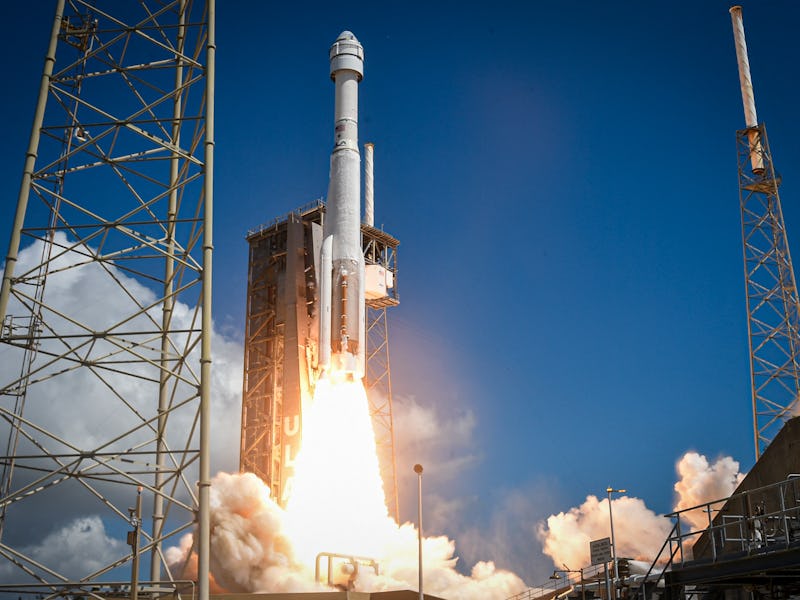What Boeing’s Starliner Thruster Tests In New Mexico Actually Revealed About the Spacecraft’s Fate
The saga continues for two NASA astronauts.

The two Boeing Starliner astronauts may remain onboard humanity’s farthest outpost for half a year more. Not everyone at NASA thinks the spacecraft has been proven safe enough to bring them back from Earth orbit.
When NASA’s associate administrator of space operations Ken Bowersox addressed reporters on Wednesday, internal debates within the space agency surfaced. The concerns were regarding the safety of Starliner’s two astronauts, Suni Williams and Butch Wilmore, who’ve already been living in space two months longer than planned.
They flew into space on June 5 for what was, at the time, set as an eight-day mission. The mission was called Crew Flight Test and was meant to be a certification of Starliner’s abilities to become a commercial crew program spacecraft — second to the now tried-and-tested SpaceX Crew Dragon — that could bring spacefarers to the International Space Station (ISS) and back safely at a low cost to NASA.
With Starliner, NASA seeks comfort. If something goes wrong in space or with SpaceX’s launchers, astronauts can rely on Starliner to make it to space without interruption in the timelines.
Things went awry soon into the mission. Thruster and helium leak anomalies didn’t stop Starliner and its crew from successfully docking to the ISS, but raised serious concerns about how they would return home.
Problems arise on test flights, and that’s what the evaluative nature of these flights are for: to catch blindspots and remedy. But days, weeks and, now, months have passed.
To figure a way forward, NASA and Boeing have run hot fire tests of Starliner in space. And on Earth, engineers have put spare thrusters through the gamut at NASA’s White Sands Testing Facility in New Mexico to replicate the conditions that the hardware in space has gone through. They believe the thruster issue is due to overheating, plus swelling of a teflon seal that blocks the flow of fuel into the thruster’s combustion chamber. “What we're trying to do now is sort of understand what all that data means to us from the White Sands testing, and then what it means to the thrusters on orbit,” NASA Commercial Crew Program manager Steve Stich said Wednesday.
As teams figure out the ramifications of the worst case scenario for thruster overheating, as well as of the helium leaks experienced during Starliner’s journey to the ISS,the test crew remains in space. Their return date continued to be pushed into the future. Their arrival home could now be as late as next year.
Don’t overstay your time in space
Tensions clashed last month, when Boeing Commercial Crew Program manager Mark Nappi scolded reporters during a press briefing for using language that called the astronauts “stranded” or “stuck” in space. Reporters pushed back asking for clearer responses from NASA and Boeing leadership as to when they’d come home, and more frequent updates on the Starliner troubleshooting. Then during a follow-up media conference, Nappi and Stich expressed regret that they had outlined the mission as an eight-day event, to avoid scrutiny.
Test flight or not, missions must adhere to schedule windows. The ISS is an aging spacecraft. To maintain its functions, astronauts are swapped in and out on assignments. Having two extra astronauts aboard the station strains the resources, occupancy, and schedules of the other space crews. That’s not even taking into account the private, personal tolls that the extended missions may have on the crew. Or, the physical changes they’ll experience as a result of longer periods in microgravity.
As a consequence of the idle Starliner, the SpaceX Dragon Crew-9 mission will no longer launch in mid-August with its crew of four. Its launch date has been pushed to September 24. Its crew may also be halved to open up two free seats for Wilmore and Williams to return home as a backup plan. But Crew-9 wraps up its six-month mission in February 2025, meaning the Starliner crew would come home eight months past schedule.
Not everyone at NASA agrees on Starliner’s safety
The same day that Bowersox and his colleagues announced the new Crew-9 launch date, he opened up about the internal discussions that have kept the Starliner crew from returning home.
“It's been really great to watch our team working, our Boeing team, our NASA team, the way people are speaking up. The way we're hearing different voices, different thoughts on how critical different factors are in the decision,” Bowersox said Wednesday.
“I think it's been very healthy. I have to admit that sometimes when we get disagreement, it's not fun. It can be painful having those discussions. But it's what makes us a good organization. And it's what will get us to a good decision as we approach that point here in the future. And I don't think we're too far away from making that call,” he added.
Starliner may still yet return with its crew. Data from recent tests and new evaluations might finally bring the team to a consensus for how — and when — to finally bring Williams and Wilmore home.